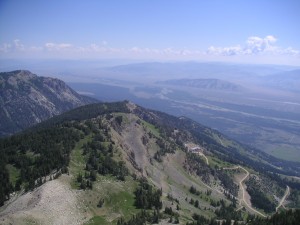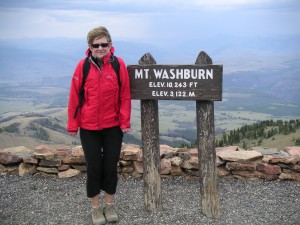Hiking in US National Parks – choosing your hike
First, consider the vertical!
When choosing your hike it is important to think about the level of capability of your party: how far you can walk, over what terrain and how long it will take. If you have not done much hiking before, you must factor in the height you will be walking as well as the distance. As anyone who has puffed their way up a flight of stairs can attest, it is much harder work to walk up than along.
To try and give some idea of relative heights, the Shard in London is only 1,016 feet tall, the Angel of the North is 66 feet tall. Many of the parks will feature day hikes with verticals of 2,000ft or more. If you have ever walked up Snowdon, the Pyg Track involves a height change of 2372ft and Mam Tor from Edale involves a 875ft vertical. If you haven’t walked up many hills, imagine walking up The Shard twice.
In general, if you know you are not terribly fit, start off with a shorter hike with relatively little vertical and work your way up. If you are in the park for several days it is surprising how quickly you can improve your fitness.
Finally, if your chosen hike is a circular route (rather than there and back on the same path) involving significant height change, find out which is the steeper route and make sure you go up that way and come down the less steep path. This may seem counter-intuitive but coming down a very steep path is much harder than going up it. It is easier to slip and lose your footing and much harder on the knees.
General Advice
The weather can change very quickly, especially in the mountains. Make sure you get an updated forecast before you set off on a hike and take additional clothing with you, even if the forecast is good. Thunderstorms blow up from nowhere and in the high parks it can and does snow in July. Trust me on this, I have been snowed on having left the trailhead wearing short sleeves and regretting my choice of long trousers.
If you are hiking at high altitude during the summer it is often worth assuming there will be an afternoon thunderstorm (they are very common), so set off early enough that you can have reached your end point and be back down below the tree line before any storms build up. If you can see a storm building be sensible and turn back, getting caught in a thunderstorm in the open is a good way of being struck by lightening, not to mention getting so wet you will wonder whether you will ever dry out again!
If you are going on a particularly arduous hike or one that is not well walked it can be a really good idea to tell someone where you are going and when you expect to be back. If you haven’t contacted them by an agreed time they can then call for help on your behalf. This is especially useful when you are hiking in a place with no mobile phone signal.
Wherever you are hiking you should be also aware of some sensible park rules; don’t approach or feed any animals, even of they look cute you may hurt them or they may hurt you. Please, please don’t leave any litter – all the leave only footprints, take only photos stuff can sound a bit hackneyed but it is a good point!


